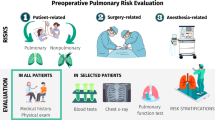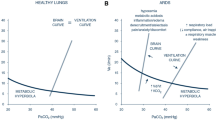Abstract
There is ongoing controversy as to whether effective facemask ventilation (FMV) should be established following induction of anesthesia before a muscle relaxant is administered. The rationale for such practice is the belief that, should FMV be ineffective, non-paralyzed patients can be woken up, and subsequently an alternative airway management can be considered. However, the chances of successfully restoring adequate spontaneous respiration before severe hypoxemia develops in an anesthetized, apneic patient who is prone to anesthetic-induced respiratory depression and airway collapse are very small. On the other hand, the overall evidence shows that muscle relaxation is likely to improve or leave unchanged, but not to worsen, the quality of FMV. Furthermore, muscle relaxation will facilitate placement of a supraglottic airway device and endotracheal intubation, interventions which may become essential should the patient become hypoxemic during failed FMV. Thus, the earliest administration of a muscle relaxant following induction of anesthesia may well be the most effective and safest practice. Insistence on demonstration of adequate FMV before administration of a muscle relaxant is more of a ritual than an evidence-based practice. It should therefore be abandoned.
Similar content being viewed by others
References
Calder I, Yentis SM. Could ‘safe practice’ be compromising safe practice? Should anaesthetists have to demonstrate that face mask ventilation is possible before giving a neuromuscular blocker? Anaesthesia. 2008;63:113–5.
Xue FS, Liao X, Wang Q, Yuan YJ, Xiong J, Liu JH. Is it unnecessary to confirm successful face mask ventilation before administration of a neuromuscular blocking agent? Anaesthesia. 2011;66:519–20.
Pandit JJ. Checking the ability to mask ventilate before administering long-acting neuromuscular blocking drugs. Anaesthesia. 2011;66:520–2.
Cook T. What about patients whose lungs cannot be ventilated? Anaesthesia. 2011;66:522–3.
Ramachandran SK, Kheterpal S. Difficult mask ventilation: does it matter? Anaesthesia. 2011;66(Suppl. 2):40–4.
Richardson MG, Litman RS. Ventilation before paralysis: crossing the Rubicon, slowly. Anesthesiology. 2012;117:456–8.
Calder I, Yentis SM. Could ‘safe practice’ be compromising safe practice? Should anaesthetists have to demonstrate that face mask ventilation is possible before giving a neuromuscular blocker? Anaesthesia. 2008;63:113–5.
Priebe H-J. Could ‘safe practice’ be compromising safe practice? Should anaesthetists have to demonstrate that face mask ventilation is possible before giving a neuromuscular blocker? Anaesthesia. 2008;63:671–2.
Calder I, Yentis S, Patel A. Muscle relaxants and airway management. Anesthesiology. 2009;111:216–7.
Gordon RJ. Anesthesia dogmas and barriers to patient safety? Anesth Analg. 2012;114:694–9.
Priebe H-J. Ventilation before paralysis. Anesthesiology. 2013;118:992–3.
Broomhead RH, Marks RJ, Ayton P. Confirmation of the ability to ventilate by facemask before administration of neuromuscular blocker: a non-instrumental piece of information? Br J Anaesth. 2010;104:313–7.
Tsuiki S, Isono S, Ishikawa T, Yamashiro Y, Tatsumi K, Nishino T. Anatomical balance of the upper airway and obstructive sleep apnea. Anesthesiology. 2008;108:1009–15.
Hajiha M, DuBord MA, Liu H, Horner RL. Opioid receptor mechanisms at the hypoglossal motor pool and effects on tongue muscle activity in vivo. J Physiol. 2009;587:2677–92.
Claeys MA, Camu F. Efficacy of lorazepam and lormetazepam as intravenous premedicants for anesthesia and surgery. Acta Anaesthesiol Belg. 1986;37:113–20.
Eikermann M, Eckert DJ, Chamberlin NL, Jordan AS, Zaremba S, Smith S, Rosow C, Malhotra A. Effects of pentobarbital on upper airway patency during sleep. Eur Respir J. 2010;36:569–76.
Eastwood PR, Szollosi I, Platt PR, Hillman DR. Comparison of upper airway collapse during general anaesthesia and sleep. Lancet. 2002;359:1207–9.
Hillman DR, Platt PR, Eastwood PR. The upper airway during anaesthesia. Br J Anaesth. 2003;91:31–9.
Eastwood PR, Platt PR, Shepherd K, Maddison K, Hillman DR. Collapsibility of the upper airway at different concentrations of propofol anesthesia. Anesthesiology. 2005;103:470–7.
Bennett JA, Abrams JT, Van Riper DF, Horrow JC. Difficult or impossible ventilation after sufentanil-induced anesthesia is caused primarily by vocal cord closure. Anesthesiology. 1997;87:1070–4.
Fink BR. The etiology and treatment of laryngeal spasm. Anesthesiology. 1956;17:569–77.
Abrams JT, Horrow JC, Bennett JA, Van Riper D, Storella RJ. Upper airway closure: a primary source of difficult ventilation with sufentanil induction of anesthesia. Anesth Analg. 1996;83:629–32.
Odeh M, Schnall R, Gavriely N, Oliven A. Effect of upper airway muscle contraction on supraglottic resistance and stability. Respir Physiol. 1993;92:139–50.
Isono S, Kochi T, Ide T, Sugimori K, Mizuguchi T, Nishino T. Differential effects of vecuronium on diaphragm and geniohyoid muscle in anaesthetized dogs. Br J Anaesth. 1992;68:239–43.
Warters RD, Szabo TA, Spinale FG, DeSantis SM, Reves JG. The effect of neuromuscular blockade on mask ventilation. Anaesthesia. 2011;66:163–7.
Sachdeva R, Kannan TR, Mendoca C, Patteril M. Evaluation of changes of tidal volume during mask ventilation following administration of neuromuscular blocking drugs. Anaesthesia. 2014;69:826–32.
Pandit JJ, Duncan T, Robbins PA. Total oxygen uptake with two maximal breathing techniques and the tidal volume breathing technique: a physiologic study of preoxygenation. Anesthesiology. 2003;99:841–6.
Langeron O, Masso E, Huraux C, Guggiari M, Bianchi A, Coriat P, Riou B. Prediction of difficult mask ventilation. Anesthesiology. 2000;92:1229–36.
Bouvet L, Albert M-L, Augris C, Boselli E, Ecochard R, Rabilloud M, Chassard D, Allaouchiche B. Real-time detection of gastric insufflation related to facemask pressure-controlled ventilation using ultrasonography of the antrum and epigastric auscultation in nonparalyzed patients: a prospective, randomized, double-blind study. Anesthesiology. 2014;120:326–34.
Seet MM, Soliman KM, Sbeih ZF. Comparison of three modes of positive pressure mask ventilation during induction of anaesthesia: a prospective, randomized, crossover study. Eur J Anaesthesiol. 2009;26:913–6.
Amathieu R, Combes X, Abdi W, Housseini LE, Rezzoug A, Dinca A, Slavov V, Bloc S, Dhonneur G. An algorithm for difficult airway management, modified for modern optical devices (Airtraq laryngoscope; LMA CTrach™): a 2-year prospective validation in patients for elective abdominal, gynecologic, and thyroid surgery. Anesthesiology. 2011;114:25–33.
Kheterpal S, Martin L, Shanks AM, Tremper KK. Prediction and outcomes of impossible mask ventilation: a review of 50,000 anesthetics. Anesthesiology. 2009;110:891–7.
Goodwin MW, Pandit JJ, Hames K, Popat MT, Yentis SM. The effect of neuromuscular blockade on the efficiency of mask ventilation of the. Anaesthesia. 2003;58:60–3.
Frerk C, Pearce A. Induction and maintenance of anaesthesia. In: Cook T, Woodall N, Frerk C, editors. 4th National Audit Project of the Royal College of Anaesthetists and the Difficult Airway Society. Major Complications of Airway Management in the United Kingdom. London: RCoA; 2011:55-61.
http://www.rcoa.ac.uk/nap4.. Accessed 5 Aug 2015.
Lieutaud T, Billard V, Khalaf H, Debaene B. Muscle relaxation and increasing doses of propofol improve intubating conditions. Can J Anesth. 2003;50:121–6.
Combes X, Andriamifidy L, Dufresne E, Suen P, Sauvat S, Scherrer E, Feiss P, Marty J, Duvaldestin P. Comparison of two induction regimens using or not using muscle relaxant: impact on postoperative upper airway discomfort. Br J Anaesth. 2007;99:276–81.
Davis DP, Ochs M, Hoyt DB, Bailey D, Marshall LK, Rosen P. Paramedic-administered neuromuscular blockade improves prehospital intubation success in severely head-injured patients. J Trauma. 2003;55:713–9.
Ramachandran SK, Kheterpal S. Difficult mask ventilation: does it matter? Anaesthesia. 2011;66(Suppl. 2):40–4.
Pandit JJ. Checking the ability to mask ventilate before administering long-acting neuromuscular blocking drugs. Anaesthesia. 2011;66:520–2.
Richardson M, Litman R. Ventilation before paralysis: crossing the Rubicon, slowly. Anesthesiology. 2012;117:456–8.
Lee C, Jahr JS, Candiotti KA, Warriner B, Zornow MH, Naguib M. Reversal of profound neuromuscular block by sugammadex administered three minutes after rocuronium: a comparison with spontaneous recovery from succinylcholine. Anesthesiology. 2009;110:1020–5.
Sørensen MK, Bretlau C, Gätke MR, Sørensen AM, Rasmussen LS. Rapid sequence induction and intubation with rocuronium–sugammadex compared with succinylcholine: a randomized trial. Br J Anaesth. 2012;108:682–9.
Benumof JL, Dagg R, Benumof R. Critical hemoglobin desaturation will occur before return to an unparalyzed state following 1 mg/kg intravenous succinylcholine. Anesthesiology. 1997;87:979–82.
Ikeda A, Isono S, Sato Y, Yogo H, Sato J, Ishikawa T, Nishino T. Effects of muscle relaxants on mask ventilation in anesthetized persons with normal upper airway anatomy. Anesthesiology. 2012;117:487–93.
Author information
Authors and Affiliations
Corresponding author
About this article
Cite this article
Priebe, HJ. Should anesthesiologists have to confirm effective facemask ventilation before administering the muscle relaxant?. J Anesth 30, 132–137 (2016). https://doi.org/10.1007/s00540-015-2072-2
Received:
Accepted:
Published:
Issue Date:
DOI: https://doi.org/10.1007/s00540-015-2072-2




